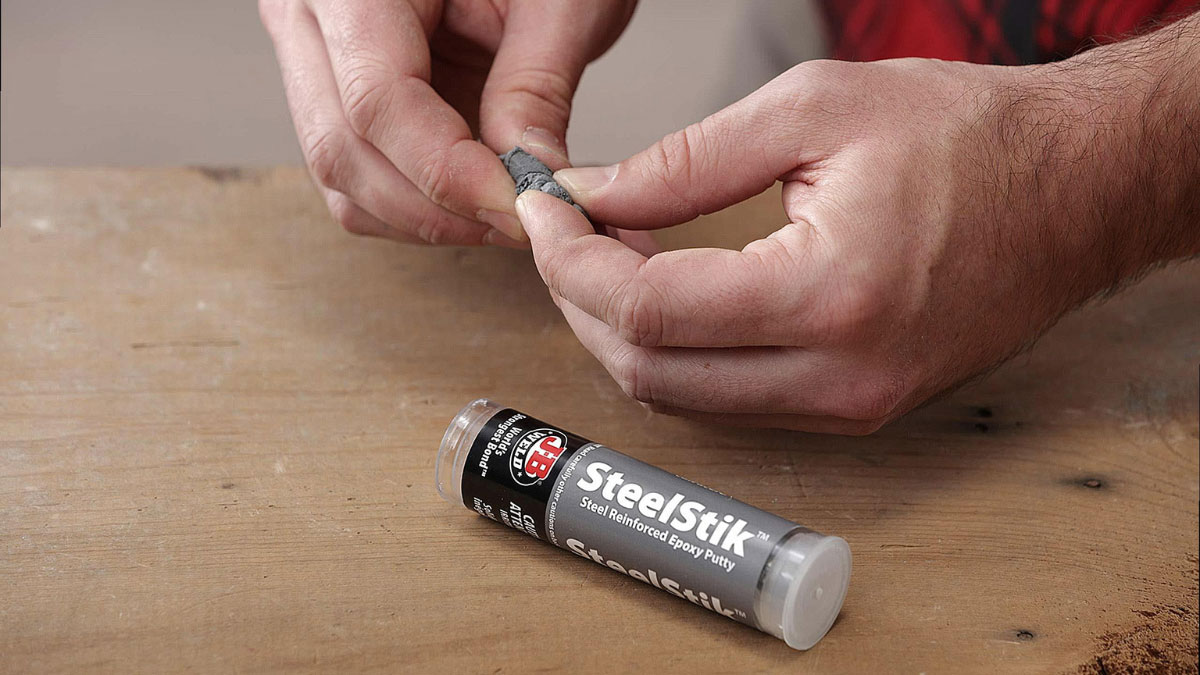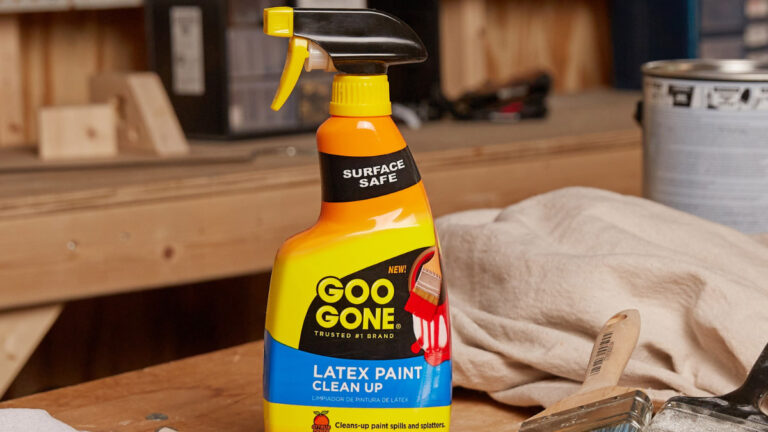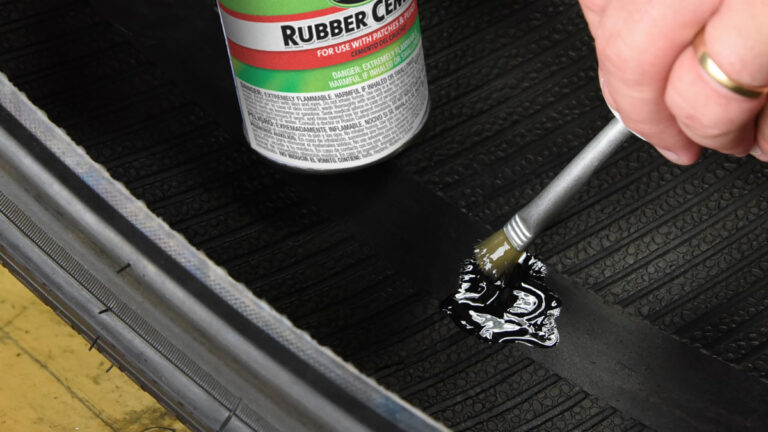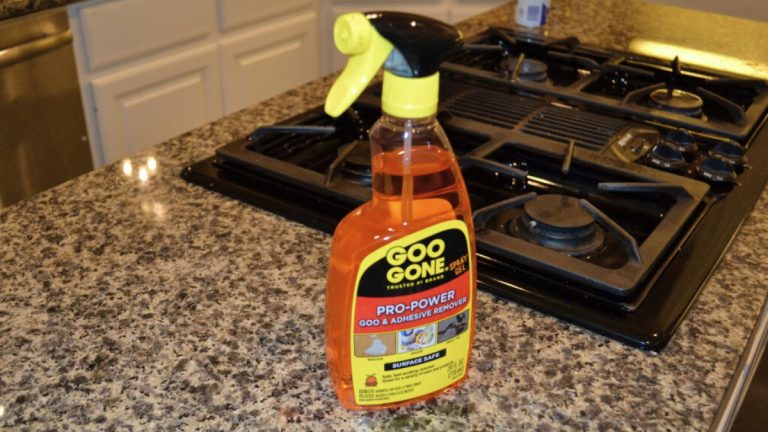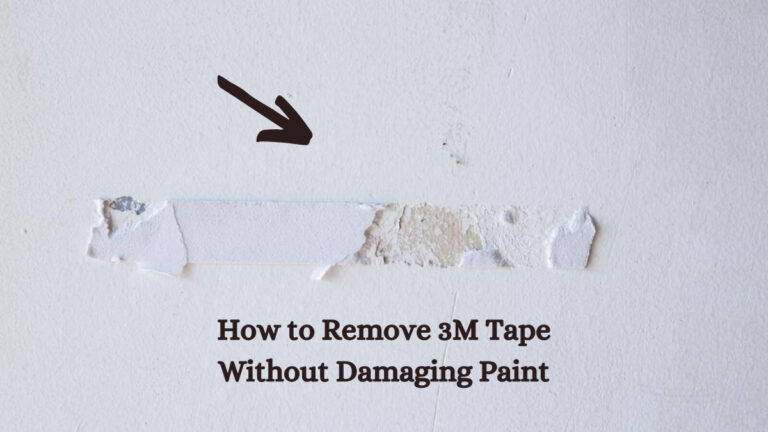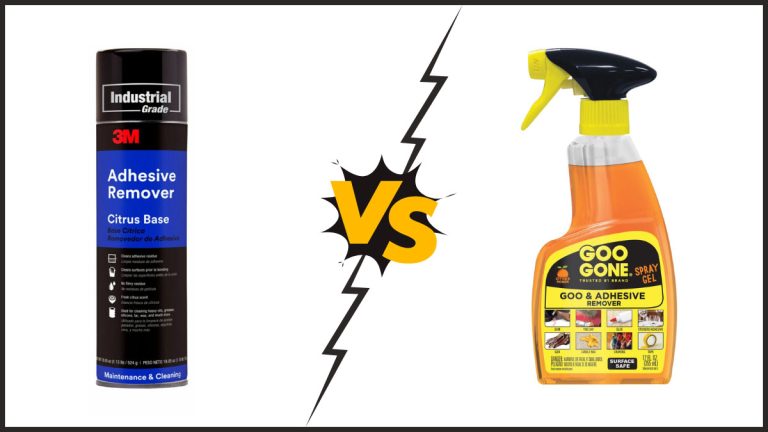Is JB Weld Conductive? Learn About Its Electrical Properties
Ever found yourself in the middle of a DIY project and wondered if JB Weld is conductive? You’re not alone. Many hobbyists and professionals alike turn to JB Weld for its strong adhesive properties, but its electrical conductivity remains a common question.
Understanding whether JB Weld can conduct electricity is crucial, especially if you’re working on electrical repairs or projects involving sensitive components. Let’s jump into what makes JB Weld tick and whether it fits the bill for your next project involving electrical elements.
Key Takeaways
- JB Weld is an Electrical Insulator: JB Weld does not conduct electricity, making it ideal for applications requiring electrical insulation.
- Material Composition: Composed of resin, hardener, and iron particles, JB Weld forms a strong, durable bond but does not support electrical current flow.
- Thermal Conductivity: While JB Weld has moderate thermal conductivity (7 W/mK), it is significantly less efficient than metals like aluminum or copper.
- Practical Applications: JB Weld is suitable for electrical repairs and projects needing strong bonding and insulation, but it’s unsuitable for applications requiring electrical conductivity.
- Alternative Conductive Adhesives: For projects requiring electrical conductivity, consider adhesives like silver epoxy, copper epoxy, or carbon-based adhesives.
- Pros and Cons: JB Weld offers strong bonding and versatility, but requires surface preparation and has a 24-hour curing time—unsuitable for quick repairs needing electrical conductivity.
What Is Electrical Conductivity?
Electrical conductivity refers to a material’s ability to transmit electric current. This property is crucial in various applications, from household wiring to advanced electronics.
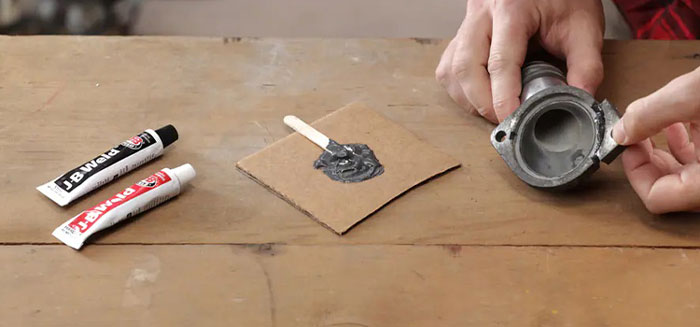
Key Terms and Definitions
- Conductors: Materials, like copper and aluminum, which allow the free flow of electric current. They possess high electrical conductivity.
- Insulators: Materials, such as rubber and glass, that resist electric current. They have low electrical conductivity.
- Semiconductors: Materials, including silicon and germanium, whose conductivity lies between conductors and insulators. They are essential in microelectronics.
Factors Influencing Conductivity
Several factors affect a material’s electrical conductivity:
- Material Composition: Metals usually exhibit high conductivity. Non-metals, especially polymers and ceramics, typically display low conductivity.
- Temperature: Conductivity may increase or decrease based on temperature. For metals, higher temperatures typically reduce conductivity.
- Impurities: Additives can alter a material’s conductivity. For instance, doping in semiconductors enhances their conductive properties.
- Structure: The physical alignment and bonding of atoms impact conductive efficiency.
Units of Measurement
Electrical conductivity is measured in siemens per meter (S/m). High values indicate strong conductors, while low values signify poor conductivity.
Practical Applications
Understanding electrical conductivity is vital for designing and maintaining:
- Wiring Systems: Ensuring efficient current flow without overheating.
- Electronic Components: Creating reliable circuits and devices.
- Safety Equipment: Appropriately insulating materials to prevent electrical hazards.
Data Comparison
Here is a comparison to visualize the conductivity of different materials:
| Material | Conductivity (S/m) |
|---|---|
| Copper | 5.80 x 10^7 |
| Aluminum | 3.77 x 10^7 |
| Silicon (doped) | 1.56 x 10^-3 |
| Rubber | 1.00 x 10^-15 |
| Glass | 1.00 x 10^-11 |
Understanding these variations allows for informed decisions when selecting materials for electrical projects.
Action Point
When evaluating materials for your projects, consider their electrical conductivity, especially if your work involves sensitive electronic components. This knowledge ensures safer and more effective applications.
JB Weld Composition and Properties
Chemical Components
JB Weld’s composition includes a resin and a hardener. When combined, these two elements form an exceptionally strong bond. The key chemical components are:
- Resin: Activates when mixed with the hardener.
- Hardener: Initiates curing and bonding process.
- Iron Particles: Enhance strength and impart magnetic properties. Although these particles improve durability, they don’t make JB Weld electrically conductive.
JB Weld’s two-part epoxy system results in a robust compound due to the chemical reaction between the resin and hardener.
Physical Characteristics
JB Weld’s physical properties make it versatile for various applications:
- Thermal Conductivity: Measures at approximately 7 W/mK. While JB Weld conducts heat better than most epoxy resins, it’s inferior to metals such as aluminum (240 W/mK) and copper (400 W/mK).
- Insulator: Functions as an electrical insulator. This property ensures that JB Weld can seal and bond without risking electrical shorts or conductivity interference.
- Durability: Combines the benefits of epoxy with iron particles, creating a material resistant to wear and capable of withstanding high stress.
Here’s a table summarizing its key properties:
| Characteristic | Value |
|---|---|
| Electrical Conductivity | Non-Conductive |
| Thermal Conductivity | 7 W/mK |
| Composition | Resin, Hardener, Iron Particles |
| Magnetic Properties | Present (Iron Particles) |
| Strength | High |
By understanding JB Weld’s composition and properties, you’ll better assess its suitability for various projects, especially those requiring electrical insulation and thermal management.
Conductivity Tests and Results
In this section, you’ll find detailed insights into JB Weld’s conductivity based on rigorous tests and evaluations.
Electrical Conductivity
JB Weld does not conduct electricity, making it an ideal insulator. Multiple authoritative sources, including the manufacturer’s FAQs, confirm this. The epoxy resin in JB Weld encapsulates the metal particles within, preventing any potential electrical conduction.
Key Points:
- Insulator: JB Weld acts as an insulator, stopping current flow.
- Epoxy Resin: The resin encapsulates metal particles, ensuring no conduction.
- Standard Conditions: Under normal use, JB Weld doesn’t conduct electricity.
Thermal Conductivity
While JB Weld has better thermal conductivity than typical epoxy resins, it doesn’t match metals like aluminum or copper.
Thermal Conductivity Comparison:
- JB Weld: ~7 W/mK
- Aluminum: 240 W/mK
- Copper: 400 W/mK
JB Weld’s thermal properties allow it to manage heat better than standard epoxies, but it remains significantly less efficient than metallic conductors.
Laboratory Findings
Laboratory tests confirm that JB Weld functions effectively as an electrical insulator under typical conditions.
Observations:
- Standard Form: In its usual form, JB Weld does not allow electric current to pass through.
- Insulation Properties: It effectively insulates and stops any electrical flow between conductive parts.
Practical Applications
Given its insulating properties, JB Weld is suitable for various electrical and thermal applications.
- Electrical Repairs: Ideal for sealing and bonding without risking electrical shorts.
- Thermal Management: Can manage heat in applications that don’t require metallic-level conductivity.
Action Point: Ensure that you consider JB Weld for projects needing strong insulation and moderate thermal conductivity, avoiding its use in applications demanding metal-like thermal efficiency.
Alternative Conductive Adhesives
When JB Weld’s insulating properties don’t meet your project’s needs, consider alternative conductive adhesives designed for electrical applications.
Overview of Options
Conductive adhesives offer several advantages for electronics and electrical repairs. These adhesives bond components while allowing current flow.
- Silver Epoxy: Often used in electronics, combines silver particles with epoxy resin for high conductivity.
- Copper Epoxy: A more affordable option, using copper particles bonded with resin, though less conductive than silver epoxy.
- Carbon-based Adhesives: Use carbon particles for moderate conductivity and flexibility.
Comparative Analysis
Not all conductive adhesives are created equal. The table below provides a comparative analysis of popular conductive adhesives based on key characteristics:
| Property | Silver Epoxy | Copper Epoxy | Carbon-based Adhesives |
|---|---|---|---|
| Conductivity | 3.5 x 10^7 S/m | 5.9 x 10^6 S/m | 1.0 x 10^4 S/m |
| Cost | High ($50/gram) | Moderate ($20/gram) | Low ($5/gram) |
| Flexibility | Low | Moderate | High |
| Heat Resistance | Up to 200°C | Up to 150°C | Up to 100°C |
| Curing Time | 24 hours | 12 hours | 6 hours |
Conclusion
When working on projects that need conductive properties, select adhesives that match your specific requirements. Silver epoxy is perfect for high-performance needs, while copper epoxy offers a balance of cost and effectiveness. Carbon-based adhesives are ideal for flexibility and low-cost applications. By choosing the right adhesive, you ensure your project’s success while maintaining electrical conductivity.
Pros and Cons of Using JB Weld
When considering JB Weld for your projects, it’s essential to weigh its advantages and limitations. JB Weld, known for its strong bonding and versatility, is widely used in various applications but has its set of drawbacks.
Advantages
- Strong Bonding: JB Weld forms an exceptionally strong bond between metal surfaces. For example, it’s ideal for repairing car radiators and metal pipes due to its high tensile strength.
- Thermal Conductivity: Although not electrically conductive, JB Weld exhibits relatively good thermal conductivity at 7 W/mK. This property makes it suitable for applications needing heat dissipation, like engine repairs.
- Versatility: JB Weld can adhere to a variety of materials, including metal, wood, plastic, and ceramic. This versatility allows its use in different settings, from household repairs to industrial applications.
- Electrical Insulation: JB Weld insulates rather than conducts electricity. If your project requires electrical conductivity, you’ll need alternatives like silver epoxy or copper epoxy.
- Curing Time: JB Weld requires a curing time of up to 24 hours to achieve maximum strength. This delay can be a drawback in situations needing quick repairs.
- Surface Preparation: For optimal results, surfaces must be clean and free of debris. Any contamination can weaken the bond, affecting its durability.
Below is a table summarizing the key aspects of JB Weld:
| Aspect | Details |
|---|---|
| Bonding Strength | High tensile strength suitable for metal repair |
| Thermal Conductivity | Good (7 W/mK), suitable for heat dissipation |
| Electrical Conductivity | None, acts as an insulator |
| Curing Time | Requires up to 24 hours |
| Material Compatibility | Compatible with metal, wood, plastic, ceramic |
| Surface Preparation | Surfaces must be clean for optimal bonding |
When choosing JB Weld, consider these advantages and limitations to determine its suitability for your specific project needs.
Conclusion
Understanding JB Weld’s properties is crucial for your DIY and professional projects. While JB Weld excels in strength and thermal management, it’s not suitable for applications requiring electrical conductivity. Its insulating nature makes it ideal for sealing and bonding without the risk of electrical shorts.
For projects needing conductive adhesives, consider alternatives like silver epoxy or copper epoxy. These options offer varying levels of conductivity and flexibility, ensuring you can find the right fit for your needs. Choose wisely to ensure the success and safety of your electrical projects.
Frequently Asked Questions
Is JB Weld conductive?
No, JB Weld is not conductive. It is an electrical insulator, making it suitable for applications where electrical conductivity needs to be prevented.
What are the main components of JB Weld?
JB Weld consists of two main components: a resin and a hardener. Additionally, it contains iron particles that contribute to its strength but do not affect its electrical conductivity.
Can I use JB Weld for electrical repairs?
Yes, JB Weld can be used for electrical repairs to secure or bond components as it acts as an insulator, preventing electrical shorts.
How does JB Weld compare to other adhesives in terms of conductivity?
JB Weld is an insulator and does not conduct electricity. Conductive adhesives such as silver epoxy or copper epoxy should be used if electrical conductivity is required.
What is the thermal conductivity of JB Weld?
JB Weld has a thermal conductivity of approximately 7 W/mK, which means it can manage heat better than standard epoxies but is less efficient than metals like aluminum and copper.
Can JB Weld be used for applications involving heat?
Yes, JB Weld can be used for applications involving heat, but it is less efficient in thermal conductivity compared to metals. It is suitable for moderate thermal management needs.
What are the alternatives to JB Weld for conductive applications?
For conductive applications, alternatives like silver epoxy, copper epoxy, and carbon-based adhesives can be used. Each has different levels of conductivity and other properties.
How long does JB Weld take to cure?
JB Weld typically takes up to 24 hours to cure completely. The bond gains strength over this period, ensuring a secure and durable fix.
What surfaces need to be prepared for using JB Weld?
Before applying JB Weld, ensure that surfaces are clean, dry, and free of contaminants for the best bonding results.
What are the key advantages of using JB Weld?
The advantages of JB Weld include its strong bonding capability, versatility, and good thermal conductivity. However, it is an electrical insulator and does not conduct electricity.

